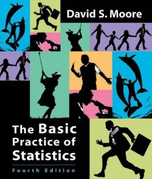Whelks and mussels. Sample surveys usually contact large samples, so we canuse the
Chapter 0, Problem 20.11(choose chapter or problem)
Whelks and mussels. Sample surveys usually contact large samples, so we canuse the large-sample confidence interval if the sample design is close to an SRS.Scientific studies often use small samples that require the plus four method. Forexample, the small round holes you often see in sea shells were drilled by othersea creatures, who ate the former owners of the shells. Whelks often drill intomussels, but this behavior appears to be more or less common in differentlocations. Investigators collected whelk eggs from the coast of Oregon, raised thewhelks in the laboratory, then put each whelk in a container with some deliciousmussels. Only 9 of 98 whelks drilled into a mussel.10(a) Why cant we use the large-sample confidence interval?(b) Give the plus four 90% confidence interval for the proportion of Oregonwhelks that will spontaneously drill mussels.
Unfortunately, we don't have that question answered yet. But you can get it answered in just 5 hours by Logging in or Becoming a subscriber.
Becoming a subscriber
Or look for another answer
